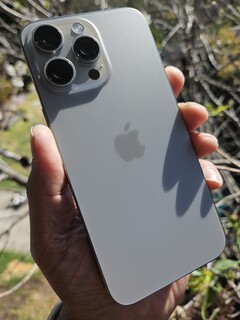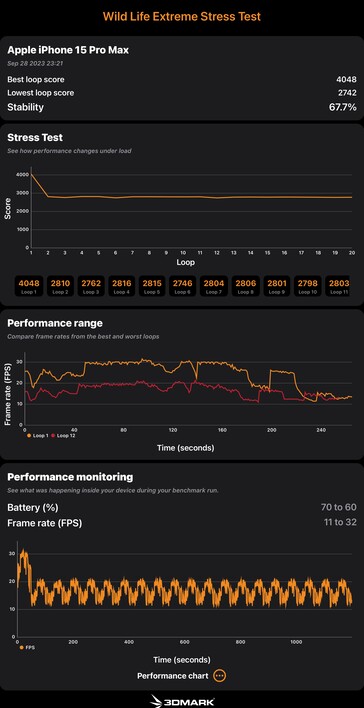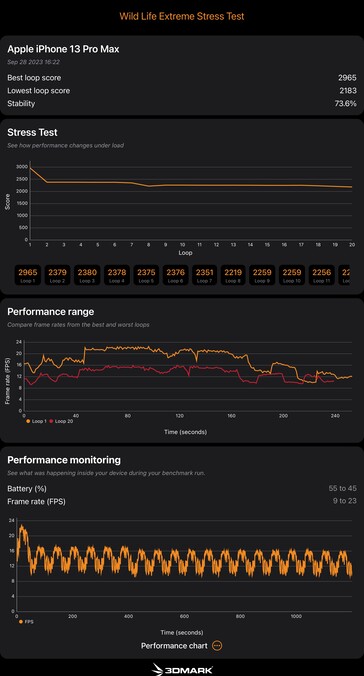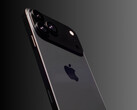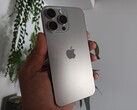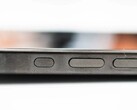The iPhone 15 Pro series launch with its vaunted A17 Pro chip and titanium frame hasn’t gone as smoothly as Apple would have liked. Apple’s latest chip is supposed to herald the launch of the latest AAA gaming titles that would normally only appear on gaming consoles and PCs come to the iPhone for the first time. The use of titanium was supposed to retain strength and help lower weight while retaining strength and offer a more premium look and feel. However, some are wondering whether both new features exclusive to the iPhone 15 Pro are problematic.
Not long after customers started receiving their new iPhone 15 Pro and Pro Max models, reports started to surface across social media that their new iPhones have been prone to overheating. This could occur when making a phone call, charging their phone, gaming and other regular activities that normally don’t result in the iPhones becoming uncomfortably hot to touch. It should, however, be noted that not all users have experienced any such issues with their new iPhones. An iPhone 15 Pro Max unit that we have on hand has not exhibited any of the overheating issues experienced by some users.
As we have reported, Apple analyst Ming-Chi Kuo has claimed that the heating issues experienced by iPhone 15 Pro users are more likely to do with the lack of an optimized cooling system, ruling out any causal factor being related to the A17 Pro chip, or the new TSMC 3 nm (N3B - "Basic") fabrication process. Rather, Kuo blames the “reduced heat dissipation area” and the “use of a titanium frame”. Titanium does not dissipate heat as effectively as the previous steel frame did, meaning more of the heat generated by the phone’s internals would need to be dissipated through the rear glass panel as a result.
Ironically, Kuo had tipped in 2021 that Apple was “aggressively testing” vapor chamber cooling for a future iPhone. However, we have yet to see an iPhone with the technology implemented. Vapor chamber cooling is found in numerous flagship Android devices as a method of keeping devices with high performance chips cool. Had Apple implemented a vapor chamber in addition to the graphite used in the iPhone 15 Pro for cooling, the heat issues some users are experiencing would have been mitigated in part, if not in full. Given the iPhone 14 Pro also experienced performance throttling issues under sustained loads thanks to Apple's minimalist approach to iPhone cooling systems, it is somewhat surprising Apple didn't opt for a more robust approach this time around -- despite the switch to the purportedly more efficient (and therefore cooler running) TSMC 3 nm node.
Despite Kuo’s assertion that the A17 Pro or TSMC’s new 3 nm process are not to blame, there are nonetheless question marks over the role these could be playing too – especially as there are also many iPhone 15 Pro users not experiencing any issues even though all models have the same graphite-based thermal solution. Apple had notably booked out most of TSMC’s production capacity for its new N3B node as typically, die-shrinks bring notable gains in performance and/or efficiency. However, TSMC was reported to have had a number of issues with fabricating chips on the node with yields of functional chips relatively low at just 55%. This can lead to increased variability between chip performance – what is known as the “silicon lottery” - which could be one possible explanation for why only some users are experiencing problems.
Another aspect of TSMC’s 3 nm process carrying a question mark is its continued use of FinFET technology. While FinFet has served TSMC well down to the 5 nm and 4 nm scale, it is known to have issues scaling down further due to issues with control over leakage of currents -- and resultant overheating. TSMC has put in place some technical measures to mitigate against this and other related issues, although it is appears possible they have not been able to eliminate them altogether. Samsung Foundry is another OEM that has started production of 3 nm chips, but uses different technology. Despite having a number of issues with its node technology in recent years, Samsung has adopted the GAA (Gate All Around) approach using its own implementation called MBCFET (Multi-Bridge-Channel FET). GAA is widely considered the better technology at these scales as it offers significantly better power management among other benefits.
TSMC also claimed that its 3 nm node would deliver 15 percent better performance and consume up to 35 percent less power than its N5 node. However, Apple’s claims about the A17 Pro at the iPhone 15 Pro launch stated that CPU performance would only be around 10 percent faster and would deliver - despite slightly higher battery capacities in the new iPhone 15 Pro models - only around the same battery life as the previous iPhone 14 Pro series. This suggests that TSMC’s 3 nm node has not lived up to the company’s promises. It is also notable that even though the A17 Pro gains around 3 billion extra transistors over the A16 chip, Apple has had to boost the CPU clock on the A17 Pro performance cores to 3.79 GHz, up from 3.46 GHz on the A16 Bionic chip to make performance gains. This in itself could cause issues with overheating, and also helps to explain the nil gains in battery life despite the vaunted new 3 nm process.
The other major power drawing component in Apple’s A17 Pro chip that deserves closer scrutiny is its all-new GPU design. Apple says that it is the most significant GPU architecture overhaul since it first started designing Apple silicon and features hardware accelerated ray tracing and mesh shading support. To help highlight how powerful the new GPU is -- claimed to be 20% faster than the A16 GPU -- Apple has partnered with leading PC game makers to bring recent AAA games like Death Stranding, Assassin's Creed Mirage, Resident Evil Village and Resident Evil 4 to the platform. Flagship PC and console titles have been a long time coming to the iPhone -- notably, Resident Evil Village is limited to just the new iPhone 15 Pro models, and iPads with an M1 chip or newer.
However, there are significant question marks hanging over the new GPU as well. According to a report by The Information, Apple had originally planned to debut this GPU architecture in last year's A16 Bionic chip; however, it was pulled at the last minute. The reason? The prototype GPUs were prone to overheating the device and also drew too much power. The fiasco was said to be the biggest ever mistake made by the Apple silicon team, which at the time, had also been seeing a string of its top chip engineers leave the company for startups or other companies. Undoubtedly, Apple has continued to work on the design in the intervening months, before the new GPU architecture eventually made its way to the A17 Pro. Its engineers probably also expected that the die-shrink to an ostensibly more efficient node would mitigate any lingering overheating and power consumption concerns -- if it performed to specification.
We tested our iPhone 15 Pro Max using the industry standard cross-platform 3D Mark Wild Extreme Stress Test, which runs a graphically demanding loop over a 20-minute period. It measures the sustained performance of a chip’s GPU, which is a key measure for how long a device will maintain a level of performance. This is particularly important for users using graphically demanding apps like games – something Apple has been touting as a key feature of this year’s Pro models. As you can see in the "Performance range" graph below, the iPhone 15 Pro Max performs better overall than the iPhone 13 Pro Max we also had on hand.
The iPhone 13 Pro features an A15 Bionic chip fabricated on TSMC's well-regarded 5 nm (N5P) node. Despite the lower overall performance of the A15 Bionic in terms of frame rates, which is to be expected given the older design of its GPU, its sustained performance profile is very similar to the A17 Pro with both starting to hit issues maintaining performance around the 130 second mark. However, it is surprising that the sustained performance characteristics of the older N5P process is very similar to the newer N3B process. Notably, the iPhone 15 Pro battery life dropped 10% over the course of the test just as the iPhone 13 Pro -- even with its older battery.
This suggests that there are no apparent efficiency gains across either the nodes or GPU architectures, despite TSMC's claim we could see up to 35% gains in efficiency over its N5P node. It is also notable is that the A17 Pro was less stable over the course of the test at 67% versus the A15 Bionic's 73.6%. These are not findings that one would expect to see from a chip using newer architecture on what is supposed to be a cutting-edge and more efficient node. Instead, it is reflective of the 'silicon lottery' mentioned earlier that only becomes even more pronounced when yields are comparatively low.
In terms of heat, both the iPhone 15 Pro and the iPhone 13 Pro were warm to touch, but there certainly was nothing unusual about our iPhone 15 Pro Max, unlike some other iPhone 15 Pro Max models running similar benchmarks. What was clearly noticeable, however, was that the iPhone 15 Pro Max titanium was cooler to the touch than the steel frame on the iPhone 13 Pro Max, which is to be expected given the differing thermal conductive characteristics of the two materials. This means that the iPhone 15 Pro design would necessitate more heat to be dissipated through the glass. However, given not all iPhone 15 Pro models are overheating -- and while a more robust cooling solution was arguably warranted -- it suggests that the problem lies less with the thermal design, but rather, elsewhere.
Other potential issues that could cause some iPhone 15 Pro models to overheat could lie with third-party apps that haven’t yet been optimized for iOS 17, which are installed on some users’ devices but not others. Or the problem could be related to issues with the system software and firmware on builds of iOS 17 that are unique to certain markets. If it is a rogue app causing the problem, checking the battery settings for a app potentially consuming excessive power and CPU cycles and deleting it -- if found -- could be a potential solution. If it is an OS-related issue, it should mean Apple will release a patch in the near future to sort it out. If it is hardware related, that can only mean Apple would have to firstly acknowledge this, and then initiate a special service program to rectify the issue.
If you want to buy an iPhone 15 Pro but are concerned, purchasing it from an official Apple Store or another store with a fee-free return policy would be the best bet. For those with an iPhone 15 Pro that is affected but can’t return it, the waiting game begins.
Source(s)
Own




